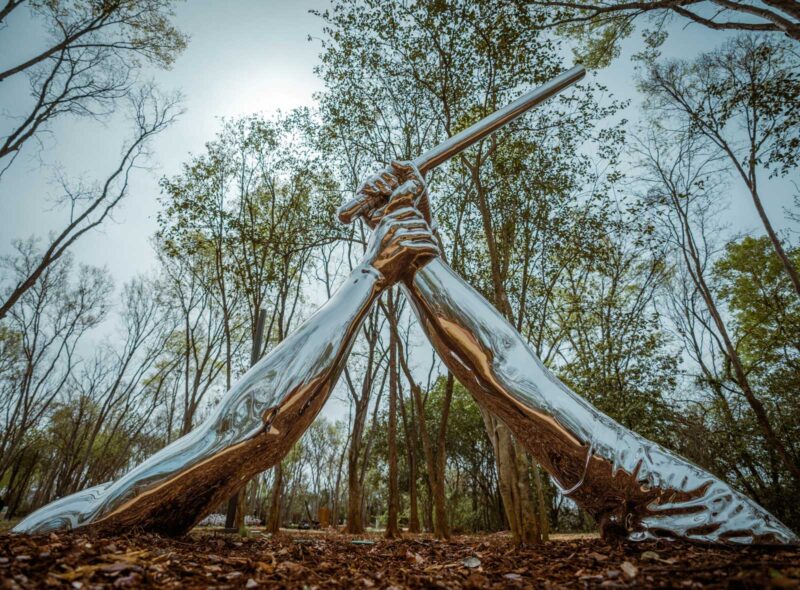Sculpture Park in Montgomery Will ‘Humanize’ the Experiences of Enslaved Africans
Share
Explore Our Galleries
Breaking News!
Today's news and culture by Black and other reporters in the Black and mainstream media.
Ways to Support ABHM?
By Curtis Bunn and Lester Holt, NBC News
Lawyer Bryan Stevenson’s latest historical project, the Freedom Monument Sculpture Park, marks the third effort that takes on slavery and its lasting impact on America.

(Strike by Hank Willis Thomas / Human Pictures)
For civil rights attorney and renowned social justice activist Bryan Stevenson, it’s not enough to know the history of slavery and the centuries-old struggles of Black people in America. He wants people to see it. Feel it. Touch it.
A new park in Montgomery, Alabama, was conceived to do just that, as visitors of the breathtaking Freedom Monument Sculpture Park will be treated to “an immersive experience” along 17 acres above the Alabama River, which was a primary route to transport enslaved Africans during the slave trade.
The park, opening next week, will be in close proximity to two other creations led by Stevenson: the awe-inspiring Memorial to Peace and Justice, an open-air site that features 800 columns suspended from above, evoking public square lynchings, and the Legacy Museum. A few miles away in downtown Montgomery, that site uses interactive elements to tell the story of the devastation of slavery, Jim Crow, violence and mass incarceration.
The third addition, the sculpture park, is an effort to humanize the experience of the enslaved person living on a plantation. The centerpiece of the park will be a 100-by-40 feet monument to freedom angled like an open book, listing roughly 100,000 known surnames of people who were emancipated in 1865. The monument is billed as the first of its kind to commemorate the more than 10 million people who were enslaved in America.
Explore exhibits documenting the three centuries of enslavement.
Read about a Mississippi Civil War Memorial that now includes more Black military history.
Find more breaking news.









Comments Are Welcome
Note: We moderate submissions in order to create a space for meaningful dialogue, a space where museum visitors – adults and youth –– can exchange informed, thoughtful, and relevant comments that add value to our exhibits.
Racial slurs, personal attacks, obscenity, profanity, and SHOUTING do not meet the above standard. Such comments are posted in the exhibit Hateful Speech. Commercial promotions, impersonations, and incoherent comments likewise fail to meet our goals, so will not be posted. Submissions longer than 120 words will be shortened.
See our full Comments Policy here.